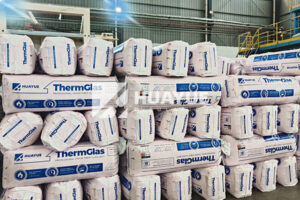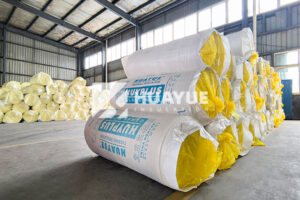Batt Insulation for Metal Buildings: Is Fiberglass the Right Choice?
Many metal building owners struggle with heat loss, condensation, or unpredictable energy bills. Fiberglass batt insulation could be the practical solution you’ve been searching for.
Fiberglass batt insulation is an effective, affordable way to reduce energy loss, manage condensation, and maintain comfortable interior temperatures in metal buildings. It also helps meet strict building codes for energy efficiency and safety.
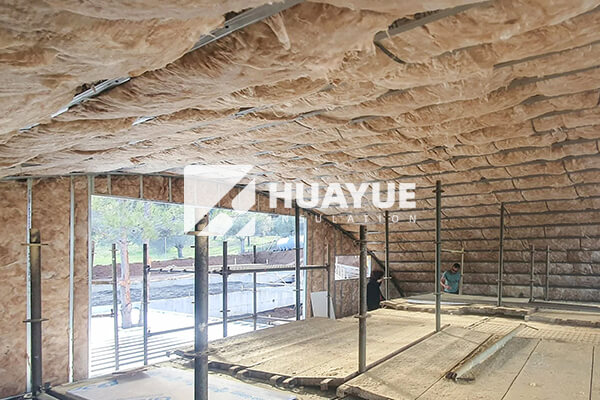
When I first began working with industrial clients, I discovered just how much metal buildings lose heat or gain moisture without proper insulation. But picking the right batt insulation—especially for large metal structures—takes careful thought. You’ll want to understand not just the product, but why it works, how to install it, and how to maximize its benefits. Let’s walk through what makes fiberglass batts a top pick.
What is Fiberglass Insulation?
A poorly insulated metal building can lead to high energy bills, condensation problems, and even lost productivity. Many owners feel at a loss about where to start.
Fiberglass insulation is made of spun glass fibers that trap air and block heat transfer, making it a strong choice for insulating metal buildings. It comes in batts that are easy to install, cost-effective, and fire-resistant.
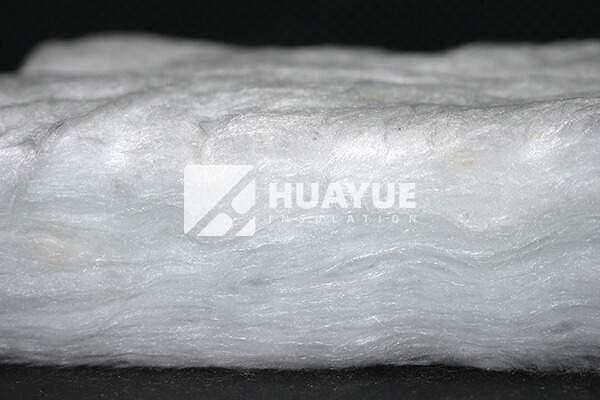
Fiberglass insulation has a long history in construction. In metal buildings, its value comes from its simple design. The fibers form a mat that traps air. This reduces heat loss in winter and blocks heat in summer. I have seen how even a basic layer of fiberglass batts makes these structures quieter. The insulation also acts as a buffer against condensation—something metal buildings often struggle with. Moisture buildup leads to rust and costly damage. Using a good vapor barrier in combination with fiberglass batt insulation helps prevent this. Installation is also straightforward. The batts are light and can be cut to fit around beams or structural elements. The main thing is to avoid compressing the batts during installation, as this can lower their insulating value. When evaluating fiberglass batts, I always consider the R-value, which measures how well it slows heat transfer. For metal buildings, higher R-values mean better energy control, but you also need to ensure the insulation fits the cavity without gaps.
Fiberglass Insulation for Pole Barns: What Should You Know?
Owners of pole barns often face problems with temperature swings and condensation. If the wrong insulation is chosen, ongoing maintenance and energy costs can rise.
Fiberglass insulation, when installed well in pole barns, significantly reduces energy loss and manages moisture problems. It suits the unique framing and spacing of pole barn structures while offering an economical solution.
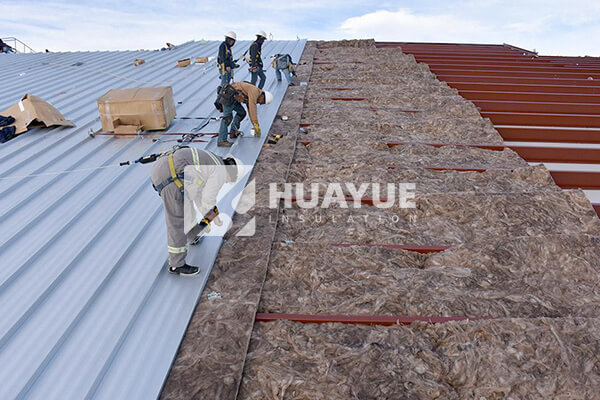
Pole barns are popular for their versatility and low cost. However, the open framing and wide spacing between posts create big insulation challenges. Standard fiberglass batts come in widths and thicknesses specifically sized for pole barn bays. When fitted correctly, these batts fill the cavities between supports without leaving voids. That means fewer cold spots or condensation issues. I have worked with clients who need to store sensitive equipment or livestock in these barns. In both cases, fiberglass batts help create a stable internal environment. The insulation also supports the use of interior finishes because it’s fire-rated and keeps walls dryer. Choosing the right facing for the batts is also important. Kraft-paper or foil facings increase vapor resistance and reflect radiant heat, which helps even more in humid or hot climates. Proper installation is not just about rolling out batts. I always recommend sealing around penetrations and taping the seams of facings. This prevents air leaks and further improves performance.
Metal Building Insulation with Fiberglass: What Are the Options?
Metal building owners often feel overwhelmed by the many insulation choices on the market. The wrong product can lead to poor results and higher costs.
Fiberglass batts come in a range of thicknesses and R-values to suit different climates, budgets, and building sizes. Select the R-value that matches your local code, climate, and desired energy savings.
The selection process should always start with a clear understanding of the building’s use and location. Not all metal buildings need the thickest or highest R-value batts. Here’s a breakdown of common R-values and where I’ve seen them work best:
| R-Value | Thickness (inches) | Typical Use |
|---|---|---|
| R10 | 3.5 | Mild climates or partition walls |
| R13/R14 | 3.5–4 | Standard wall insulation |
| R19 | 6 | Cold climates, roof insulation |
| R25 | 8 | High-demand wall/roof |
| R30 | 10 | Roofs in cold areas |
| R38 | 12 | Ultra-high performance roofs |
For example, cold storage warehouses or northern region buildings benefit from higher R-values. Warmer climates focus more on vapor barriers and lower thickness. Another thing to watch is compressing the batts—overfilling a cavity by squeezing in thicker insulation reduces effectiveness. For metal buildings, I always suggest moisture-resistant facings, which also soften interior noise. You can choose unfaced batts if you combine them with separate vapor barriers. Some manufacturers offer batt insulation pre-laminated with a facing layer that is easy to install. This saves time and makes compliance with codes easier.
Installing Fiberglass Insulation in a Metal Building or Pole Barn: How Do You Get It Right?
Poor installation can ruin even the best insulation, leading to wasted energy and moisture problems. Some owners risk DIY mistakes; others want guidance to ensure reliable results.
Installing fiberglass batts in metal buildings or pole barns involves fitting the batts snugly between framing without compression, sealing all joints, and adding a vapor barrier or facing for full moisture control.
I remember my first warehouse retrofit project. I learned that a careful approach pays off. Start by measuring the cavity width and cutting batts to fit snugly. Always begin installation at the roof line, moving downward. That way, gravity works in your favor and the batts stay in place. Joints and gaps should be minimal. Where electrical or plumbing penetrates, I cut the batt so it fits tightly around each obstacle. Facings must be lapped and taped for air-tightness. When attaching faced batts, staple flanges to framing to hold them. In humid areas or cold climates, a continuous vapor barrier on the warm side is crucial. Otherwise, condensation can get trapped, causing corrosion or mold. Before closing up the walls, check for any compressions, misplaced batts, or missed gaps. Take your time—fixing problems afterward is difficult and expensive.
Fiberglass Metal Building Insulation R10, R13, R14, R19, R25, R30, R38: What Do These Ratings Mean?
Choosing the best R-value seems confusing, especially when building codes and energy needs differ so much. Many struggle with balancing cost versus performance.
R-values describe how well fiberglass batts resist heat transfer. Higher R-values mean better insulation. Select the R-value that fits your climate, budget, building code, and energy targets.
The right R-value will depend on several factors. Local energy codes often set the minimum, but going higher can mean long-term savings and a more comfortable space. For example, R13 might satisfy codes for walls in mild climates, but going to R19 adds extra protection for colder areas. In roofing, up to R30 or R38 may be best for warehouses or cold storage. I always advise clients to factor in long-term operating costs. Thicker insulation often pays for itself if heating or cooling loads are high. However, too high an R-value can mean diminishing returns and higher upfront cost. Here’s a simple comparison:
| Application | Mild Climate | Cold Climate |
|---|---|---|
| Walls | R13–R19 | R19–R25 |
| Roofs | R19–R25 | R30–R38 |
Balancing budget and needs is key. I also remind clients that proper installation and vapor barrier use affect actual performance as much as insulation thickness.
Conclusion
Fiberglass batt insulation offers a practical, cost-effective way to insulate metal buildings and pole barns, supporting energy efficiency and long-term protection when installed and chosen correctly.
You may also be interested in:
Ready to Get Started?
Get in touch with our experts for personalized solutions tailored to your needs.
Get Free QuoteLatest Articles

Glass Wool Fire Rating: How Safe Is Your Insulation?
Dec 25, 2025
Let's Work Together
Ready to take your business to the next level? Get in touch with our team of experts and let's discuss how we can help you achieve your goals.
Get Free Solutions
